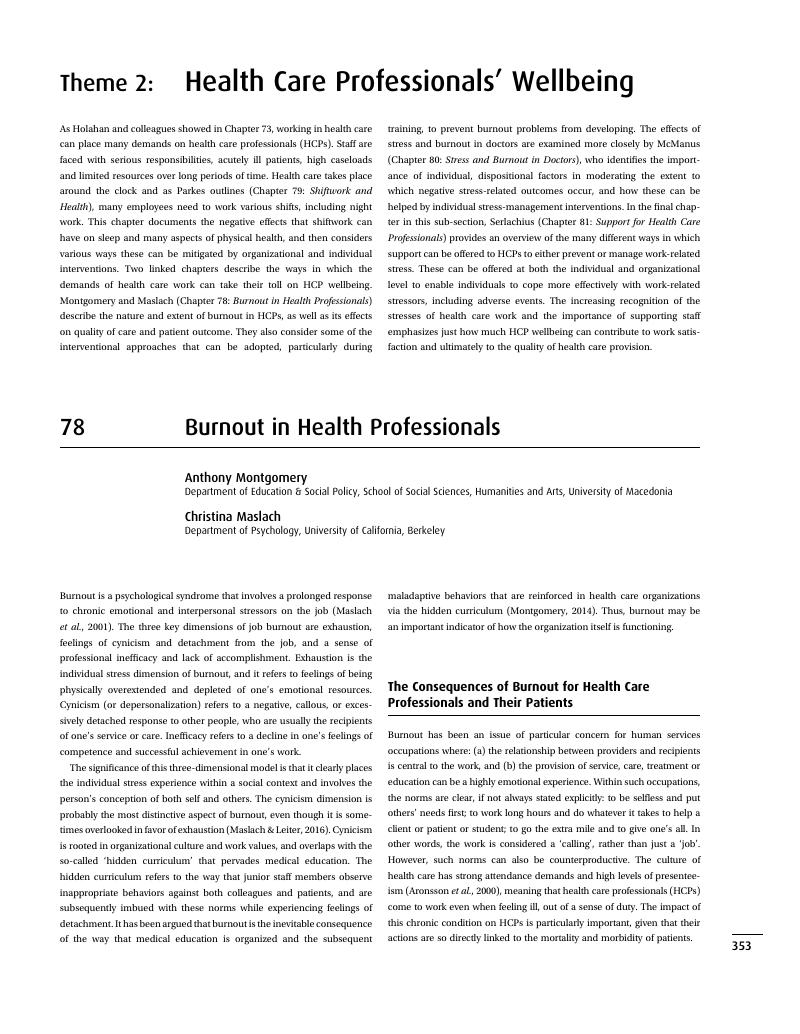Book contents
- Cambridge Handbook of Psychology, Health and Medicine
- Cambridge Handbook of Psychology, Health and Medicine
- Copyright page
- Contents
- Contributors
- Preface
- Part I Psychology Health and Illness
- Section 1 Psychological Aspects of Health and Illness
- Section 2 Psychological Assessment
- Section 3 Psychological Interventions
- Section 4 Health Care Practice
- Theme 1: Health Care Environment and Behaviour
- Theme 2: Health Care Professionals’ Wellbeing
- Theme 3: Communication
- Part II Medical Topics
- Index
- References
Theme 2: - Health Care Professionals’ Wellbeing
from Section 4 - Health Care Practice
Published online by Cambridge University Press: 05 June 2019
- Cambridge Handbook of Psychology, Health and Medicine
- Cambridge Handbook of Psychology, Health and Medicine
- Copyright page
- Contents
- Contributors
- Preface
- Part I Psychology Health and Illness
- Section 1 Psychological Aspects of Health and Illness
- Section 2 Psychological Assessment
- Section 3 Psychological Interventions
- Section 4 Health Care Practice
- Theme 1: Health Care Environment and Behaviour
- Theme 2: Health Care Professionals’ Wellbeing
- Theme 3: Communication
- Part II Medical Topics
- Index
- References
Summary

- Type
- Chapter
- Information
- Cambridge Handbook of Psychology, Health and Medicine , pp. 353 - 370Publisher: Cambridge University PressPrint publication year: 2019



